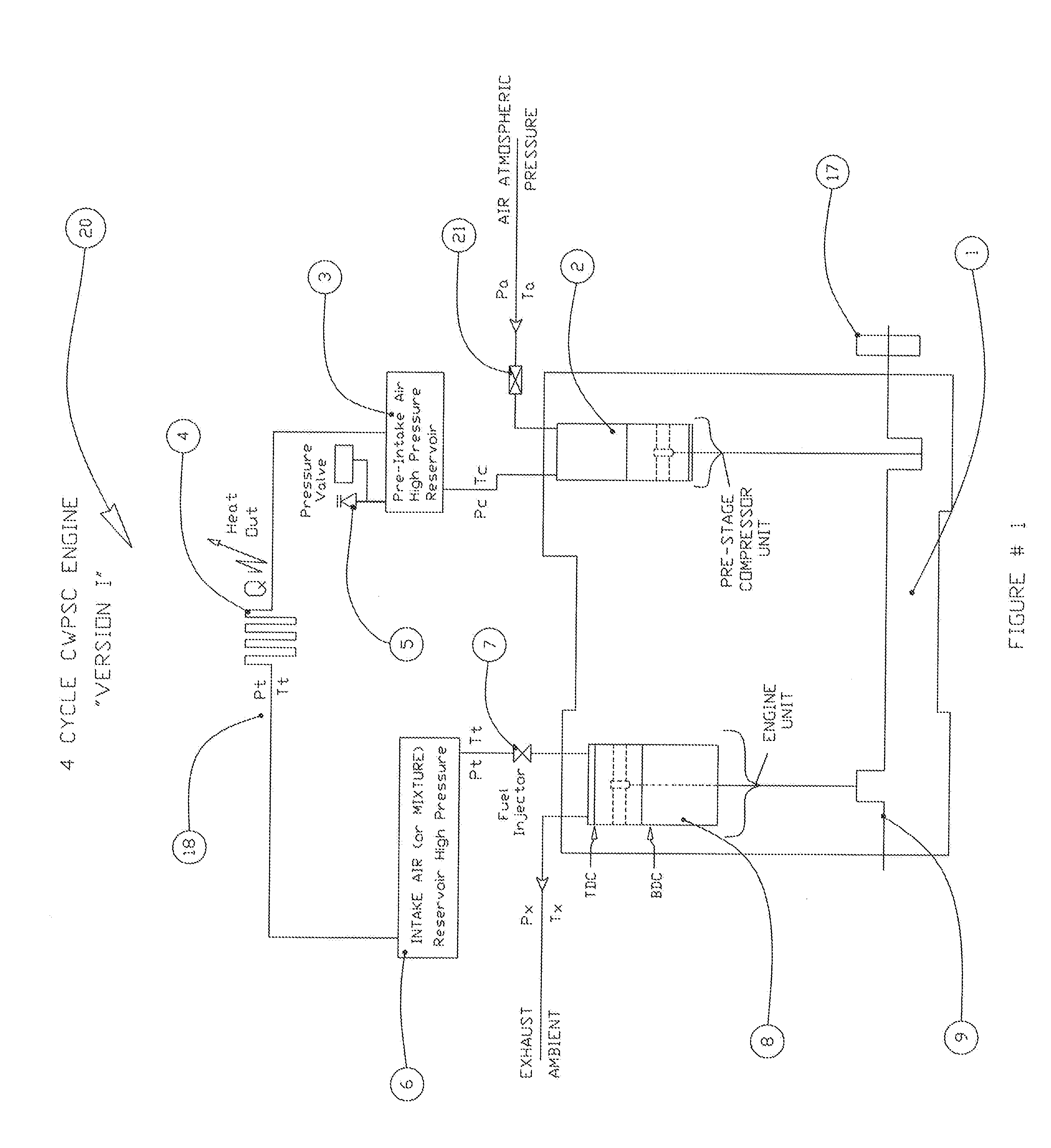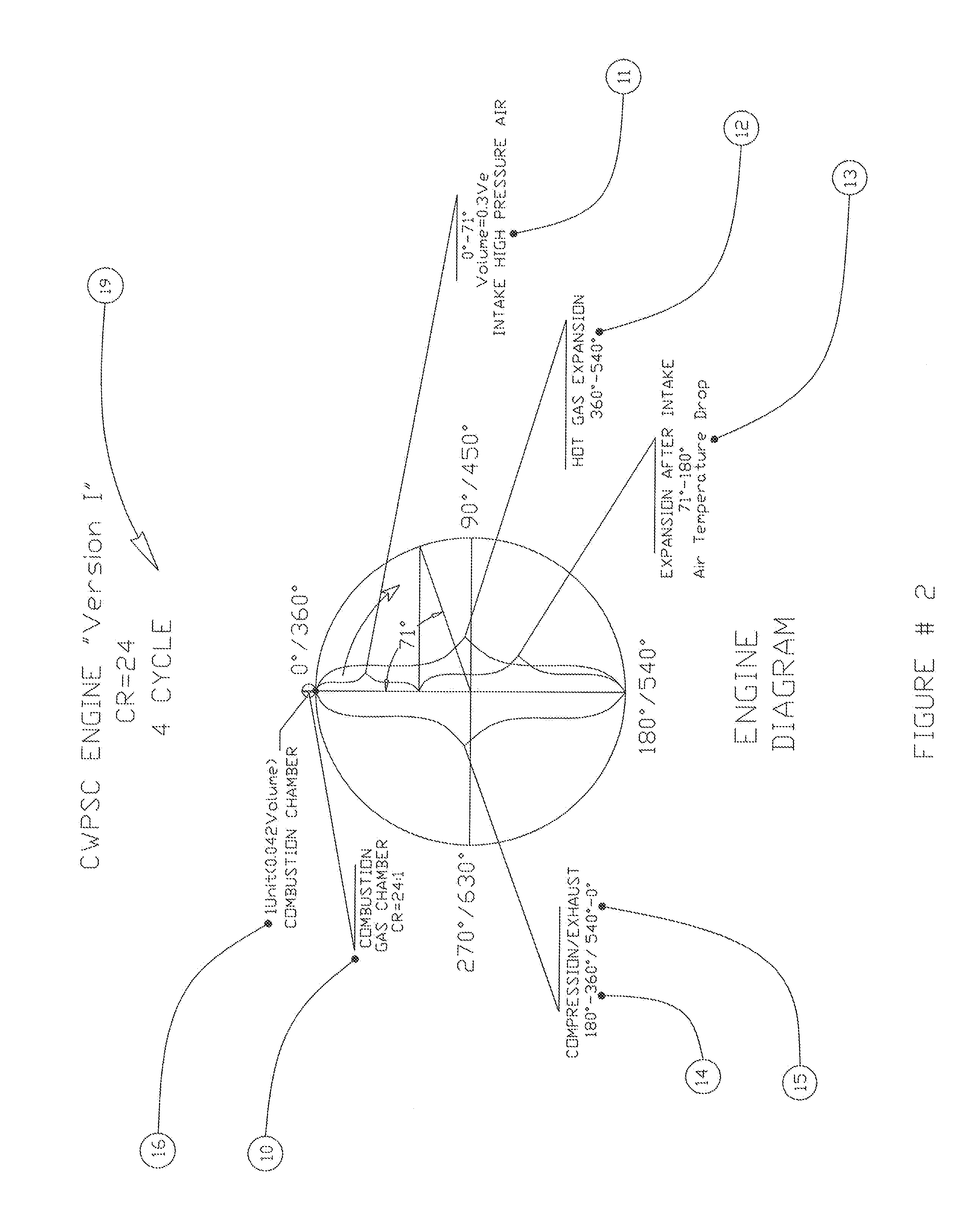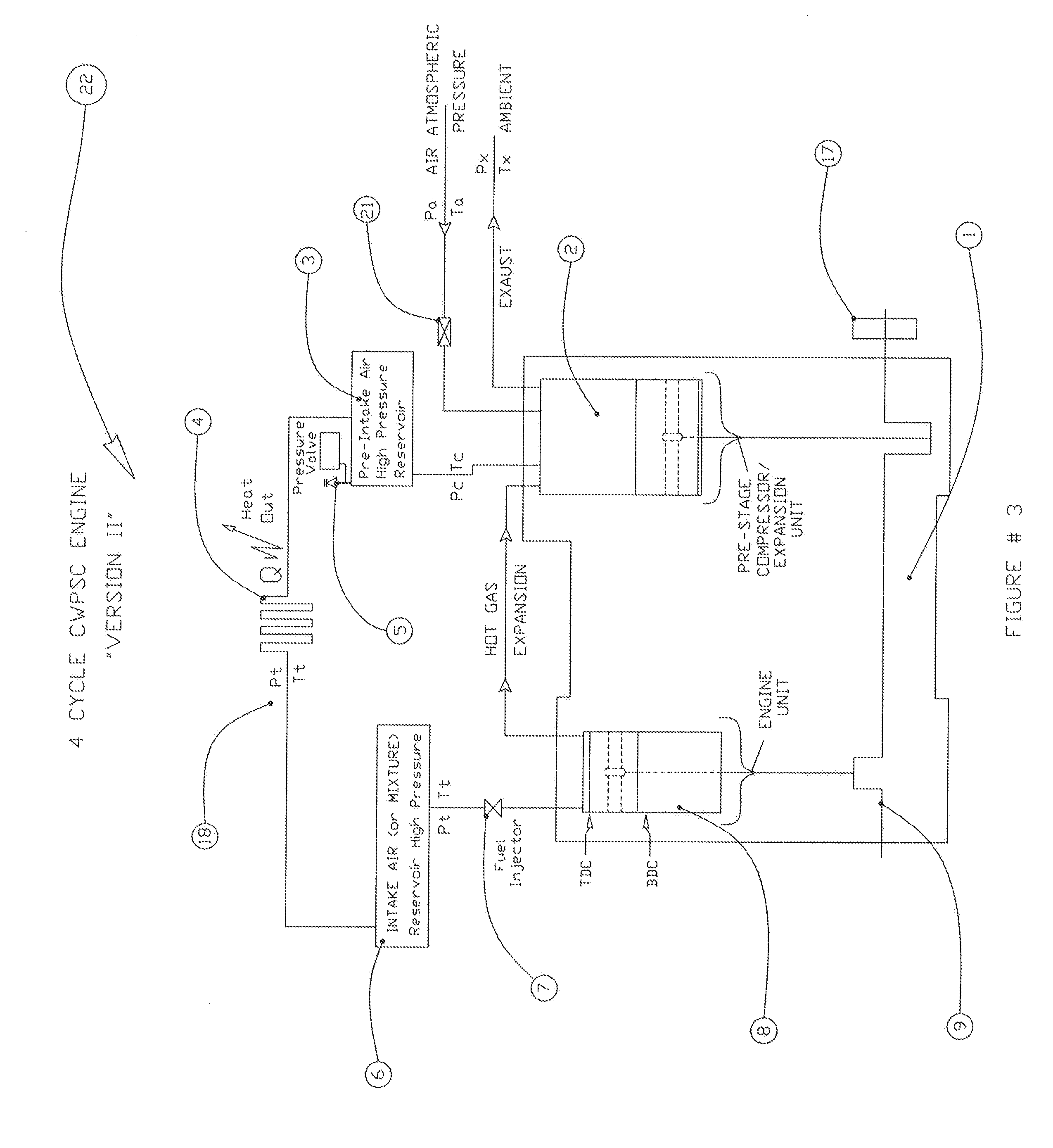Four-Cycle Internal Combustion Engine with Pre-Stage Cooled Compression
a technology of internal combustion engine and compression, which is applied in the direction of combustion engine, machine/engine, charge feed system, etc., can solve the problems of reducing engine life, affecting efficiency, and reducing the efficiency of a standard four-cycle petroleum internal combustion engine with respect to compression ratio and pre-ignition compression high pressure temperatures, so as to achieve a slightly better efficiency gain, higher pre-ignition compression, and higher compression ratios
- Summary
- Abstract
- Description
- Claims
- Application Information
AI Technical Summary
Benefits of technology
Problems solved by technology
Method used
Image
Examples
first embodiment
[0053]Referring to FIG. 1, it schematically depicts an exemplary single-cylinder four-cycle internal combustion engine with pre-cooled compression 20, referred to as “Version I”. The engine block 1 comprises a pre-stage compressor 2, a combustion cylinder 8, and an air-cooled heat exchanger 4. In this embodiment, the combustion cylinder 8 and the compressor 2 are connected to the same crankshaft 9 and flywheel 17. Due to the four-cycle combustion process 19, the compressor 2 will complete two compression cycles for each complete combustion cycle. Therefore, during each combustion cycle, the compressor 2 will intake and compress a volume of air equal to twice its cylinder volume.
[0054]FIG. 2 is an exemplary four-cycle, single-cylinder combustion process diagram 19, comprising a short intake 11 process (0°-71°), compression 14 (100°-360°), cold air expansion 13 (71°-180°), hot expansion 12 (360°-540°) and exhaust 15 (540°-0°) cycles, with a compression ratio CR 10 of 24:1.
[0055]The re...
exemplary embodiment 22
[0087]FIG. 4 illustrates the second exemplary embodiment 22 of a four-cycle internal combustion “Version II” with a cycles diagram 23, showing the compression ratio 10, intake 11, compression 14, expansion 12 and hot gas engine cylinder exit process 15.
[0088]FIG. 5 illustrates the extended expansion captured at compressor cylinder 2, comprising air suction 25, compressor air compression 27, extended hot gas expansion 26 and gas exhaust to ambient 28.
[0089]FIG. 6 illustrates the third exemplary embodiment 32“Version HA” of a four-cycle internal combustion engine having a single combustion cylinder with one-stage pre-cooled compression. This engine works the same as the previous embodiment 22, except that the compressor cylinder 2 may be replaced by a powerful axial compressor 29 or a combination of a compressor cylinder and an axial compressor, and the extended expansion is captured at a powerful turbine 30 which can use the captured energy outright for vehicle movement or store the ...
fourth embodiment
[0104]FIG. 11, is an exemplary four-cycle, single-cylinder combustion process diagram 19 for the fourth embodiment “Version III”. It comprises a normal intake 11 process (180°), compression 14, expansion 12 and exhaust 15 cycles, with a compression ratio CR 10 of 24:1.
[0105]FIGS. 16 and 16A represent the P-V diagram of a CWPSC “Version III” 1 Liter engine with compression ratio CR=24, for the purpose of comparison with a standard engine or a standard “Hypothetical” engine, where:
[0106]a—work spent by the engine on compression=3.275V / cycle,
[0107]b—work gained by engine on expansion=8.81PV / cycle,
[0108]c—work that cannot be captured on exhaust and is lost=1.245PV / cycle,
[0109]d—heat applied to the engine by burning fuel which increases the pressure by 2.5 times,
[0110]e—work balance gained by engine=3.81PV / cycle,
[0111]f—work lost in pre-intake air compression=1.730PV / cycle. Simplified efficiency of this engine is: E =3.81 / 5.055 =75%.
Efficiency Comparisons between “Standard” and “CWPSC” E...
PUM
 Login to View More
Login to View More Abstract
Description
Claims
Application Information
 Login to View More
Login to View More - R&D
- Intellectual Property
- Life Sciences
- Materials
- Tech Scout
- Unparalleled Data Quality
- Higher Quality Content
- 60% Fewer Hallucinations
Browse by: Latest US Patents, China's latest patents, Technical Efficacy Thesaurus, Application Domain, Technology Topic, Popular Technical Reports.
© 2025 PatSnap. All rights reserved.Legal|Privacy policy|Modern Slavery Act Transparency Statement|Sitemap|About US| Contact US: help@patsnap.com



